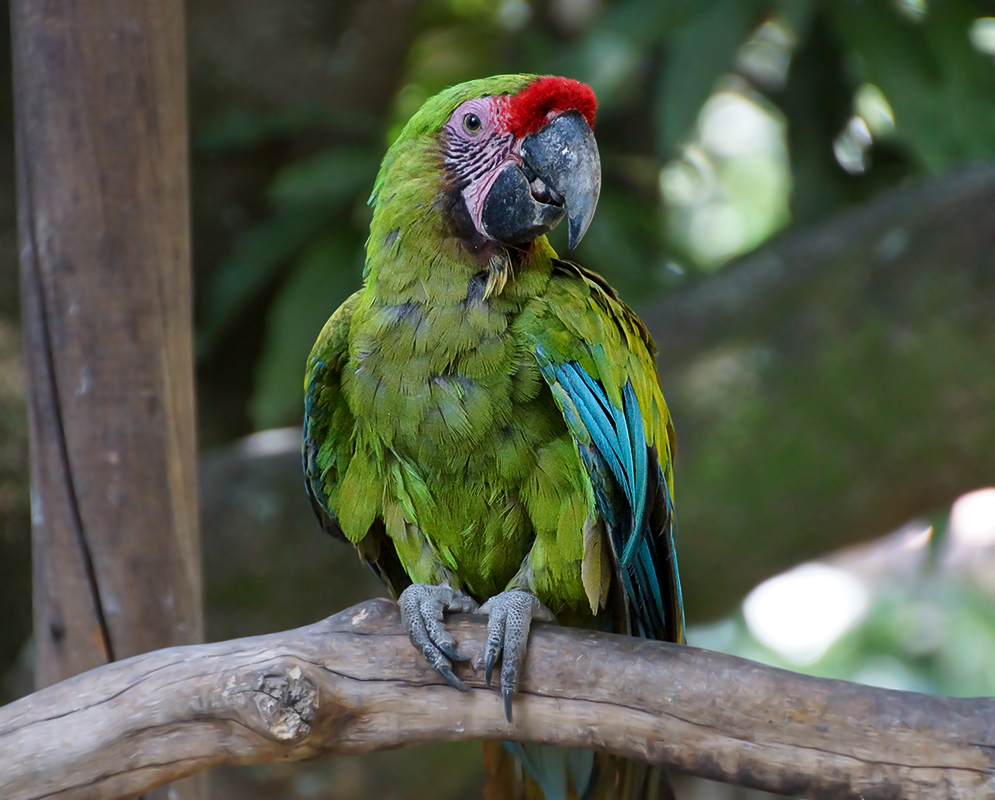This post has 11 Simple Fields-fields attached. Show fields.

The Military Macaw are easily identifiable by their brilliant green plumage with a distinctive red patch on their foreheads and a combination of red and blue on their tails. They have blue flight feathers, a large black beak, and yellow eyes. Their size is considerable, as they can reach lengths of about 27 to 31 inches with a wingspan ranging from 39 to 43 inches, and they weigh around 2 pounds. Both sexes appear similar, a condition known as monomorphism, and they reach sexual maturity between two to four years of age. Their populations are divided into subspecies with non-overlapping ranges. Ara militaris mexicanus is found in western and northeastern Mexico, Ara militaris militaris resides from northern Venezuela through the Andes of Colombia to western Bolivia, and Ara militaris bolivianus spans central Bolivia to northern Argentina. Military Macaws form large communal roosts, often on cliff faces, and are known for their loud and distinct calls. They typically forage in pairs or small groups, feeding mainly on fruits and nuts. Nesting preferences vary by region, with some choosing cliff cavities and others tree holes, laying two to three eggs, predominantly during June in Mexico. Although adaptable to some human-modified landscapes like shade-grown coffee plantations, the Military Macaw's existence is precarious. The International Union for Conservation of Nature (IUCN) classifies it as Vulnerable, with estimates of the population ranging from 1,000 breeding pairs to as high as 10,000 birds. Their survival is jeopardized by habitat loss and the illegal pet trade, with nest poaching posing a significant threat. A substantial portion of their suitable habitat in Mexico has been lost, and protective measures are inadequate across much of their range, although some populations, like those in the Sierra Gorda Biosphere Reserve, are considered relatively stable.

